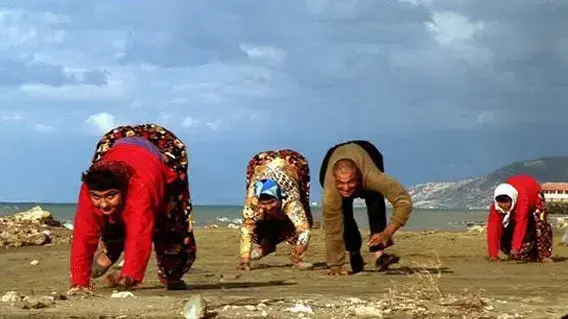The mystery of the family that walks on all fours has been solved (BBC Two's The Family That Walks On All Fours)
One family in Turkey has a way of walking that almost no other people on earth are able to do naturally - some members of the Olas family walk on all fours, meaning they also use their hands to walk, in what is known as the "bear walk".
Of the 19 children born to the Olas family, five of them adopted this unusual walk from infancy.
That is, those with the mysterious syndrome have never walked - and as babies they switched to a "bear walk" instead of a normal walk.
Tests have found that they are also mentally retarded, although their social skills appear normal.
For many years, this family has occupied researchers around the world, when it was the researcher Oner Tan, from Çukurova University in Adana, Turkey, who determined that it was a process of "reverse evolution", that is, a return to a form reminiscent of a previous evolutionary state.
He said the way some members of the Olas family moved was similar to how early Homo sapiens would have walked before evolution made them bipedal.
He claimed that it was mutations in the genes responsible for walking on two legs that caused those with the syndrome to walk on all fours again.
Since then it has been determined that they suffer from Onartan syndrome, named after the researcher.
However, many researchers - including members of the family itself - disagreed with this statement.
The family that walks on all fours (photo: screenshot, BBC)
Many researchers - including the family - disagreed with their comparison to monkeys
A BBC documentary attempted to take a more biological and sympathetic approach to the family.
Following an unpublished paper by Onar Tan explaining his observations and ideas, British scientists Nicholas Humphrey and John Scoles joined Tan in visiting the Olas family alongside a camera crew, documenting every step of their journey.
The documentary follows four sisters - Amin, Safei, Haser and Sanam - and their brother Hussain, as they wander in their strange walk.
The father, Resit, explains that he does not want them to be compared to "monkeys" in the way that researcher Tan compared them.
The documentary ends on an upbeat note as son Hussein is seen walking upright along a path.
While the two scientists were joined by researcher Tan and witnessed the same sights, they had a completely different idea.
Together with Professor Roger Keynes, the scientists argued that the walk was the result of two rare conditions occurring at once, one biological and one developmental.
At the stage when the babies developed - instead of crawling like most children, they used the "bear walk" to get around.
At this stage, some of them began to show a congenital condition that causes difficulties in balance, congenital cerebral ataxia, which is a recessive hereditary condition that passes through the genes.
The children evolved while perfecting this walk, which the British scientists claim is completely different from all the genes involved in evolution.
They were also quoted as calling Tan's diagnosis "deeply insulting to this family".
And what about her?
What the hell?
The woman who runs and jumps like a horse and generally wants to be a dog
To the full article
Since then, a significant number of recessive mutations that can lead to the syndrome have been discovered, leading to calls for reclassification into different and more specific conditions to more accurately describe the symptoms.
What makes this difficult is the fact that many of the mutations are on the same gene, called VLDLR, but cause completely different phenotypes.
There are also four other genes involved in the disease, making it even more difficult to establish an underlying mechanism for the disease.
Watch their story:
More on evolution
is this how humans will look in the year 3,000 because of our dependence on technology?
Science has created the evolutionarily perfect person - and the result is quite disturbing.
Scientists from the University of Aarhus, Denmark, have confirmed the biological cause of the family's disorder: in medical terms it is known as Cerebral Ataxia, Mental Retardation and Disequilibrium Syndrome - or simply CAMRQ.
Their research shows how an extremely rare mutation prevents proteins from distributing fat molecules correctly in cells.
This leads to damaged nerve cells, brain damage and loss of balance, which means the Turkish family has to use both their hands and feet to walk in order not to lose their balance and fall.
The Danish research is actually a scientific breakthrough in terms of our understanding of the ways in which cells are organized.
"Researchers have long wondered how relatively small proteins are able to move large fat molecules across cell membranes. We call this the 'giant substrate problem,'" says postdoctoral fellow Anna Lindlov Vestergaard from the Department of Biomedicine at Aarhus University. "Our study shows how the small molecules manage it and improves our understanding of the ways in which several diseases work," she says.
The study was recently published in the scientific journal PNAS.
health
news
Tags
genetics
Turkey
evolution

